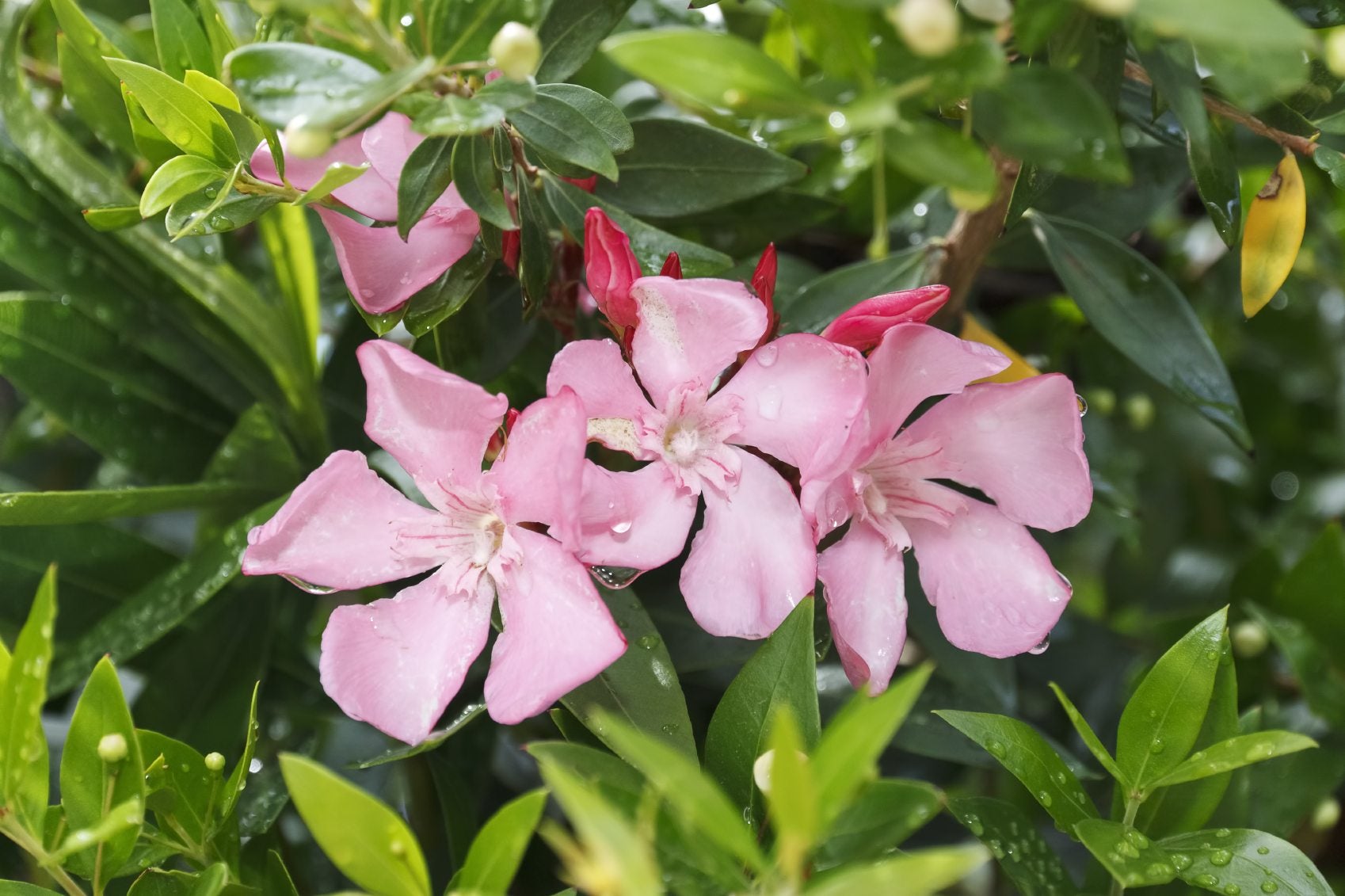Oleander Irrigation Needs: Tips On Watering Oleander Plants In The Garden

Oleanders are hardy trees suited to the southern United States, that once established require very little care and are remarkably drought tolerant. They are not only relatively carefree but produce aromatic blossoms in a slew of colors set off by their deep green, large, leathery leaves. How about watering oleander? Since they are drought tolerant, how often do you need to water oleander bushes? Read on to learn more.
Oleander Watering Requirements
Oleanders grow anywhere from 6 to 12 feet (2-4 m.) tall and wide and some up to 20 feet (6 m.) tall. They are suited to the west coast, southern states, Florida, and Texas. As mentioned, they tolerate dry conditions as well as wind and salty or marshy soils. They bloom from summer through to fall, punctuating the landscape with their colorful blossoms and heavenly scent. They are cold hardy down to 15 to 20 degrees F. (-6 to -9 C.), although there will be some damage at those temps. Luckily, oleander will generally bounce back from any frost damage. They can be grown in USDA zones 9 through 11. All this uncomplicated, effortless growth on the oleander’s part may make you think you don’t need to do anything to care for the tree. Think again, even oleander has irrigation needs. Okay then, so what are the requirements for oleander watering? How often do you need to water oleander bushes?
Oleander Irrigation Needs
It is a fallacy that you do not need to be watering your oleander plants. It is a simple jump from learning they do not need much water to the idea that you need not be watering oleander. The truth is that while they will withstand a lack of water, they certainly aren’t at their best. They begin to drop their foliage, leaving the tree with an open canopy. This is a signal that they aren’t very happy. The great news is that with some adequate irrigation again, they quickly bounce back. So how much should you be watering oleander plants? They like to be watered as much as you would water your shade trees – deeply every three days. To aid in water retention, create a reservoir or dike that is 2 to 4 inches (5-10 cm.) tall around the trunk of the tree. Also, if it is especially arid and has been, mist the plant to help stave off defoliation. If you know that you are going to go into a particularly hot, dry stretch, you can prune out 1/3 to ¼ of the foliage. Remove any growth at the tips that are young or tender and would easily dry out. Most established oleanders will have little trouble with drought conditions but be aware that they do affect the plant. You will likely have reduced growth and limited flower production during these times. Watering your oleander plants with a supplemental 1 to 2 inches (2.5-5 cm.) per week during dry weather will promote growth and more profuse flowering.
Gardening tips, videos, info and more delivered right to your inbox!
Sign up for the Gardening Know How newsletter today and receive a free copy of our e-book "How to Grow Delicious Tomatoes".

Amy Grant has been gardening for 30 years and writing for 15. A professional chef and caterer, Amy's area of expertise is culinary gardening.
-
 Looking For Plants To Give You The Soft And Fuzzies? Try These 5 Fuzzy Leaf Plant Options
Looking For Plants To Give You The Soft And Fuzzies? Try These 5 Fuzzy Leaf Plant OptionsLovers of texture, drama, silver foliage and tactile plants will adore these special sensory garden additions. These fuzzy leaf plant options will leave you all aglow
By Susan Albert
-
 Get Ready For A Summer Of Hummers! Grow These Full Sun Hummingbird Plants and Flowers
Get Ready For A Summer Of Hummers! Grow These Full Sun Hummingbird Plants and FlowersIf you’re lucky enough to enjoy a sunny backyard, make sure you are maxing out on your pollinator opportunities and grow these full sun hummingbird plants and flowers
By Tonya Barnett